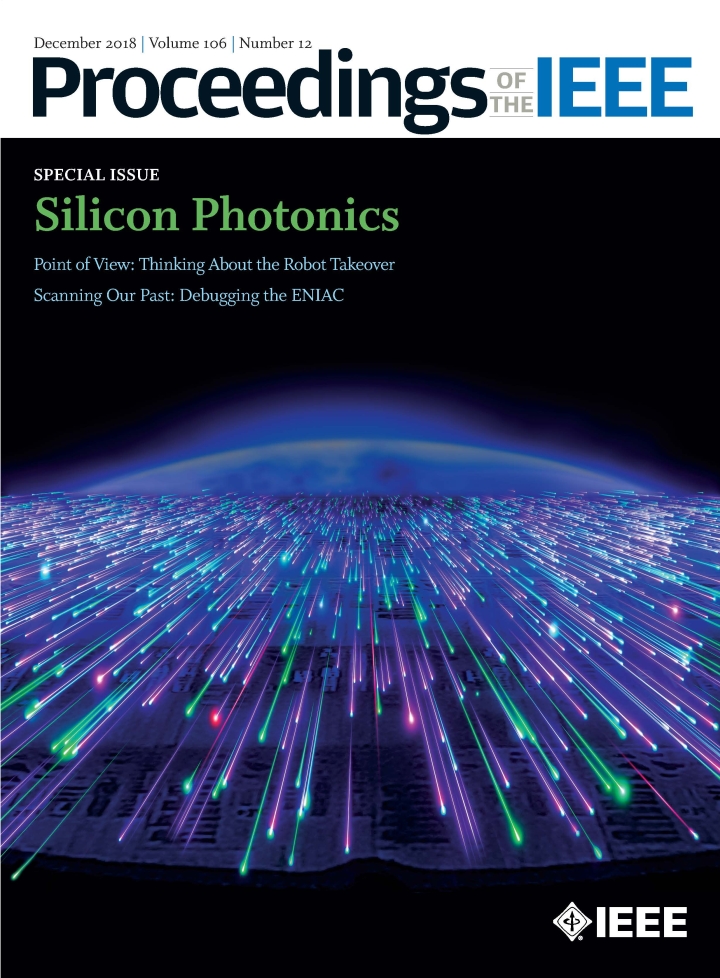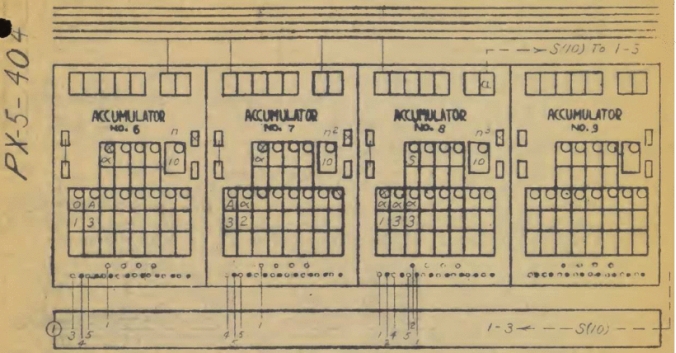2018 Journal Issues December 1, 2018


Guest Editors


Special Issue Papers
By C. R. Doerr and R. Baets
By X. Chen, M. M. Milosevic, S. Stankovi´c, S. Reynolds, T. D. Bucio, K. Li, D. J. Thomson, F. Gardes, and G. T. Reed
This paper presents a brief history of the field of silicon photonics, encompassing a discussion of the key devices, with a focus on the key performance milestones that were instrumental in demonstrating the potential of silicon photonics.
By D. Dai
This paper reviews advanced passive devices in silicon photonics, such as on-chip polarization-handling devices, mode converters/(de)multiplexers, microring-resonator optical filters/switches, all taking advantage of the high index contrast and asymmetric silicon-based waveguide structures.
By R. Halir, A. Ortega-Moñux, D. Benedikovic, G. Z. Mashanovich, J. G. Wangüemert-Pérez, J. H. Schmid, Í. Molina-Fernández, and P. Cheben
Building on the improvements in high-resolution lithography for silicon, one can create artificial dielectrics, periodic structures in silicon photonics with periods substantially smaller than a wavelength of light in the material. This paper discusses the theory and applications of these subwavelength structures.
By J. Witzens
This paper reviews optical modulators in silicon, which has become a very rich topic, including Mach–Zehnder modulators and ring modulators. The tradeoffs in design to achieve high speed with minimal drive voltage and insertion loss are studied.
By T. Asano and S. Noda
This paper reviews the history of 2-D photonic crystal slabs based on silicon photonics, focusing on ultrasmall cavities with ultrahigh-quality factor, and their applications as add/drop filters and Raman lasers. Ways to establish strong coupling between distant nanocavities are also discussed.
By K. Li and A. C. Foster
This paper discusses nonlinear optics in silicon photonics. Because of the tight optical confinement, very compact nonlinear devices can be made in silicon photonics. Applications include the generation of octavespanning optical frequency combs for making precise clocks.
By D. J. Blumenthal, R. Heideman, D. Geuzebroek, A. Leinse, and C. Roeloffzen
This paper reviews the state of the art of silicon nitride waveguide platforms, with their capabilities complimentary to those of silicon-ininsulator platforms, among others, with respect to the loss levels and the power handling properties.
By W. D. Sacher, J. C. Mikkelsen, Y. Huang, J. C. C. Mak, Z. Yong, X. Luo, Y. Li, P. Dumais, J. Jiang, D. Goodwill, E. Bernier, P. G.-Q. Lo, and J. K. S. Poon
This paper discusses multilayer platforms using silicon nitride and silicon waveguides. This technology allows 3-D photonic circuits to be created.
By T. Komljenovic, D. Huang, P. Pintus, M. A. Tran, M. L. Davenport, and J. E. Bowers
This paper focuses on oxide bonding of III–V semiconductors and magneto–optic materials.
By O. Marshall, M. Hsu, Z. Wang, B. Kunert, C. Koos, and D. Van Thourhout
This paper focuses on other material combinations (a.o. PZT, BTO, and graphene) as well as hetero–epitaxial growth of III–V semiconductors.
By D. Vermeulen and C. V. Poulton
One of the biggest challenges in silicon photonics is coupling the very small optical mode in silicon wire waveguides to the much larger optical mode of single-mode fibers in an efficient manner. This paper discusses in detail the various approaches reported and deployed in industry today.
By T. Pinguet, S. Denton, S. Gloeckner, M. Mack, G. Masini, A. Mekis, S. Pang, M. Peterson, S. Sahni, and P. De Dobbelaere
This paper discusses the factors that are at stake to bring a low-cost, low-power, high-performance, and high-volume optical transceiver to the market. Also, the pros and cons of monolithic and hybrid electronics/photonics integration are discussed.
By C. Doerr and L. Chen
Silicon photonics is especially suited for advanced modulation format transmitters and coherent reception, because of the large number of required integrated optical components. This paper focuses on industry deployments of silicon photonics in optical coherent communications today and tomorrow
By J.-M. Fedeli and S. Nicoletti
This paper reviews the state of the art in silicon-based midIR integrated photonics and discusses the waveguide platforms as well as the options to integrate mid-IR light sources in such platforms. The route toward applications in the field of chemical sensing, IR spectroscopy and imaging, freespace communications, etc., is also covered.
By A. Rahim, T. Spuesens, R. Baets, and W. Bogaerts
Silicon photonic devices are usually fabricated in large foundries that serve multiple customers. Silicon photonics takes advantage of these open-access silicon electronics foundries. This paper discusses this ecosystem and its evolution.
Point of View
By H. J. Trussell

Scanning Our Past
By B. L. Stuart

5 Comments
Comments are closed.